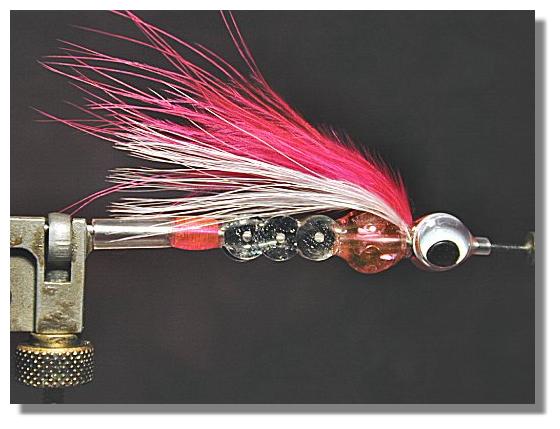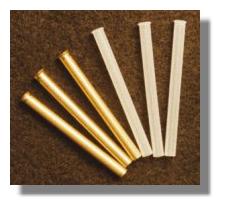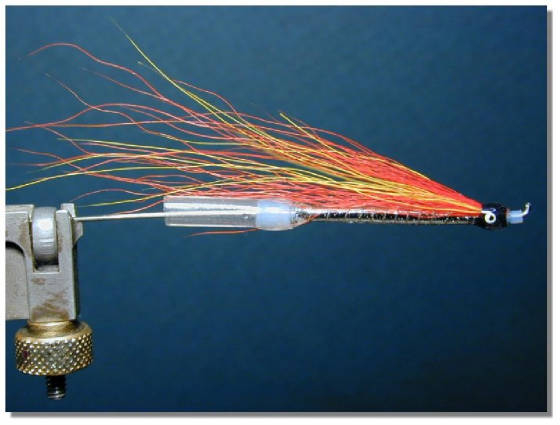|
Go-Go Girl is a fly I once saw fished on the Kuskokwim River late in 1995 by
one of my guides. It was tied on a hook and totally destroyed from ,any years of usage. I transformed the original design
to a tube making it an almost all epoxy fly. I have absolutely no idea what its supposed to represent, all I know the fish
chase it till they're worn out. I've tied this fly in all colors, even black for the Anchor under the trees. If nothing else
the Go-Go has a certain WOW appeal.

In some fast rivers like the Kenai its almost impossible to get your fly down to the salmon. In the 2002 Silver salmon
season I tried some flies with a new concept, "Russian Bullet" flies made with a body of coneheads. Surprisingly these flies
did quite well reaching salmon in heavy water.
|
|
| Heavy weight Flash Fly for the Kenai River |
|
|
| Mayhem on the Homer Spit, "Real Alaskans" fishing |
|
|
| The "Homer Roach' designed for fishing in the bay |
|
|
| Rain, babysitting doesn't stop real Alaskans from fishing |
Several years ago an acquaintance of mine from England, Peter Thornley, told me that treble hooks modified to doubles
with the tangs 180 degrees apart would increase hookups. I was skeptical at first but I decided to give this theory a test
on the Kenai River and in the salt next to the Homer Spit. All of us were quite surprised to find that it really did work
with the added feature of greatly reducing snagging of closely packed Pink salmon. Where you are allowed to use these types
of hooks try them. Modifying a hook is simple: Cut off the welded tang and bend the other two so they are opposed to 180 degrees
apart
|
|
| A Homer Silver caught on a "Roach" with 180 deg double hook |
|
|
| Russian Orthodox Church, Ninilchik, Alaska |
|
|
| "Nightwitch" tied on a small Swedish Morrum tube |
For the past several years I've had the opportunity to tie on Rooney tubes which I found to be perfect for my style of
tying. One big difference with this tube is the lack of inner plastic leader protector, the tube being highly polished to
remove all burrs and edges which would cut the leader. Personally being somewhat farsighted threading the leader is a snap
with this tube.
| click on picture to go to the Rooney Tube site |

|
| Rooney Tubes |

|
| The Mickey Finn, an Anchor River fly |
Last Year a Russian friend and fellow tier told me something about salmon I never even considered. He stated the theory
that salmon develop a hooked jaw not only to fight but to keep them from killing smolts. It seems that when salmon first enter
fresh water they are bent on genocide againsed what they consider a threat to their survival, namely salmon smolts who are
notorious egg theives. Personally I haven't witnessed this killing spree but it has been seen by fishermen in Sweden. One
of the best flies I've seen used on the Anchor River is a very sparsely tied Mickey Finn so this is my tube version of that
fly.
|



